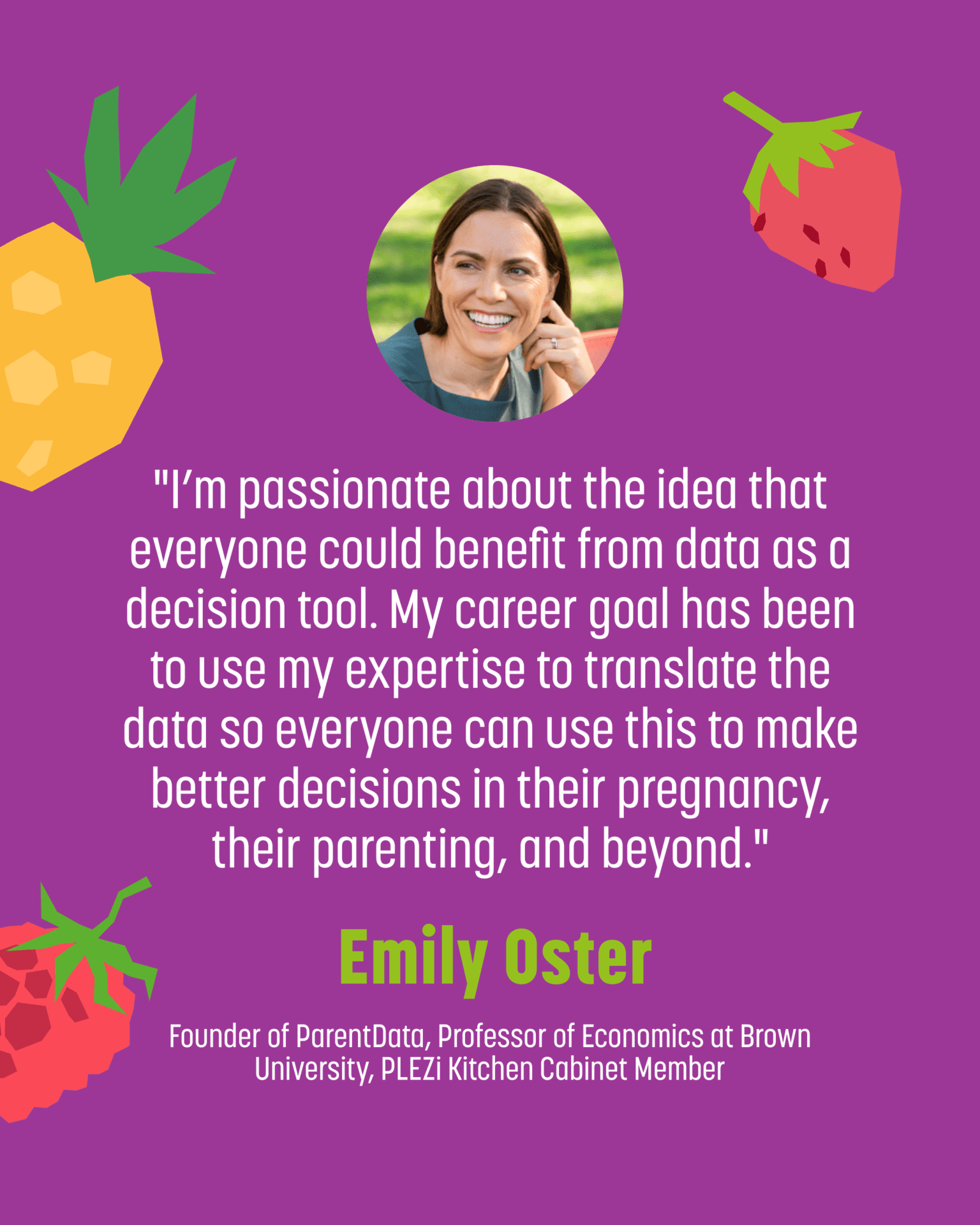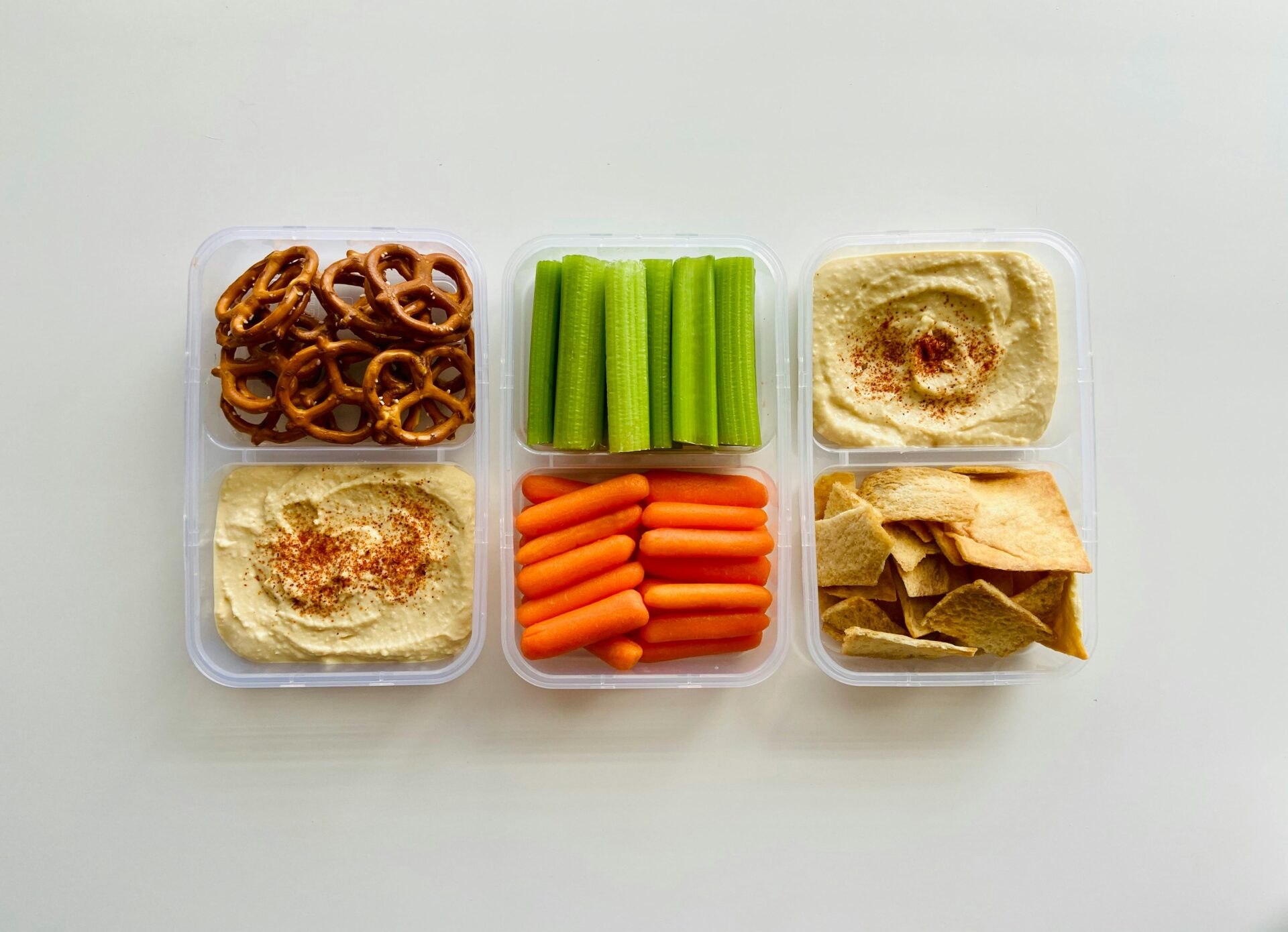We’re back with more helpful tips as part of our Table Talk series, this time with Emily Oster. Emily is a Professor of Economics at Brown University and Founder of ParentData, a data-driven guide through pregnancy, parenthood, and beyond. Her academic work focuses on health economics and statistical methods, and she has written three bestselling books on pregnancy and parenting. We’re so grateful to her for taking the time to share insights from the data when it comes to kids’ nutrition.
Check out Emily’s answers to all of your questions below, and you can always DM us on Instagram @plezinutrition if you have more questions or topics you want covered!
Q: What are some practical tips or strategies for encouraging my kids to try new foods?
Emily: We know from the data that kids respond well to supportive prompts such as “you might enjoy that,” and kids don’t respond as well to coercive prompts like “you better eat that or else you’ll lose your dessert.” So when you have multiple kids with different likes, constructing a meal where you can say “Hey, maybe you’ll try that and you’ll like it. Or maybe you can try this other thing that you might like,” that becomes the goal.
The best tip for building this kind of meal, is a meal with many components that you construct. Something like a pasta bar with pasta and cheese and sauce, and each kid gets to build their own. Or rice bowls, where there’s rice, there’s meat, there’s avocado. Anything with a few different things, and people put it together themselves.
That way, everybody gets a choice, and you can encourage trying different pieces on their own and together. As opposed to just saying “this is what’s for dinner, and that’s that.”
Q: Can you provide any insights from data on the long-term impact of what kids eat when they’re growing up on their overall wellness?
Emily: It’s very hard to link food and health because diet is so closely linked to other things. For example, people who eat a lot of vegetables are also more likely to exercise, and less likely to smoke. So, it’s really hard to say “If you eat this as a kid, you will be healthier later,” because we really just cannot see causality.
But one thing that we do know, and that we do see in data, is around food exposure when kids are young and that this is a time when kids develop a taste (and a distaste) for certain flavors. For example, if you grow up in a place where they eat a lot of rice, you are much more likely to enjoy rice as an adult, as opposed to if you grew up in a place with a lot of wheat.
And that means that childhood is an amazing opportunity to introduce our kids to a wide range of flavors and textures and get their taste buds used to things like brussels sprouts and broccoli.
Q: Any insights or data on the nutritional benefits of homemade meals versus store-bought or pre-packaged options for kids?
Emily: Food that we make at home tends to have less sodium and usually less sugar than the food that we would get out in the world. And in that sense, it probably is healthier on average.
But, what’s hard about that, especially for working parents, is that producing a home cooked meal every day is a challenge, and possibly an insurmountable challenge. And so there are two things I would say to parents thinking about this.
First, take the cheats where you can. Vegetables that you chop yourself are no better than vegetables that come pre-chopped. You can also get beef stew in a bag that you put in the slow cooker and that’s it. Take the cheats.
Second, don’t go all in on one or the other. Take out sometimes is great. You just want to have a balance.
Q: I’ve got two picky eaters – need some new tips/tricks please!
Emily: Picky eaters. Ok, I’ve got two tips from the data.
The first is that kids respond best to suggestive rather than coercive prompts. “You might like tofu. It’s a little bit like cheese.” Or, “Dates are like giant raisins. Try them.” That kind of thing tends to get better results in both the short and long-term than a coercive/yelling style prompt.
The second, probably more practical idea, is to try pairing new foods with something you know they like. Try pairing bananas with peanut butter. Try pairing brussels sprouts with hummus, or carrots with hummus. Basically, anything with a dip. Kids love dips. That’s a good way to get them to try new things.


